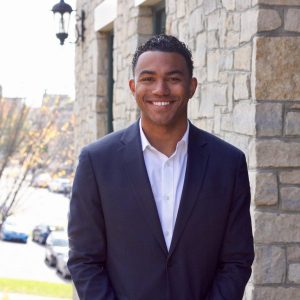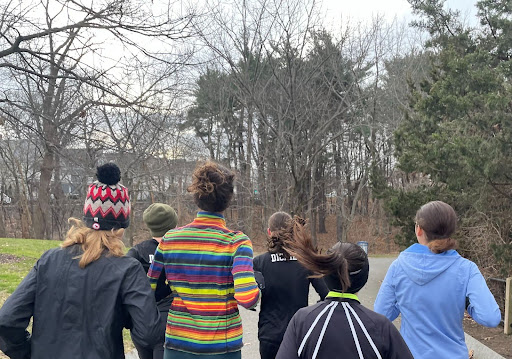Hybrid Learning: The Best Way to Ensure Student Engagement During COVID-19
October 10, 2020
This past spring, the arrival of the deadly COVID-19 pandemic forced Cambridge Public Schools (CPS) and school districts across the country to close their doors and transition to a strictly remote learning approach. However, after six months of thorough research and improved understanding of the virus, many school districts have elected to return—mostly through the use of a hybrid schedule and strict safety protocols. In contrast, the CPS District has made the rather confounding decision to use a virtual-only path of learning for the majority of students.
Cambridge took too lenient of an approach, which resulted in many students never attending class—most of whom were those without a solid support structure.
Although many argue—and rightfully so—that the virus disproportionately affects people of color and low income families, it is a fact that a properly well thought-out plan would greatly reduce the chance of a student contracting COVID-19, no matter their background. It is also quite apparent that remote learning is a massive problem that disproportionately affects people in low income communities, as, generally speaking, there is a lack of technical resources and other forms of financial support in these households.
This past spring was a failure in terms of remote learning. Cambridge took too lenient of an approach, which resulted in many students never attending class—most of whom were those without a solid support structure. Even more unfortunate is the fact that nearly every single private school in the surrounding area is reopening, in some way or another, indicating a stark contrast with CPS, and the awful reality that the pandemic is only exacerbating the achievement gap. Are we really going to flounder in fear while high-risk students are being hung out to dry?
Moreover, a survey sent out by the Superintendent Kenneth Salim in the middle of July saw overwhelming favorability for returning. According to the survey, 65% of African-Americans, 78% of Hispanics, and 89% of white families supported returning to school in some way or another. Despite a slight variance in percentages among different backgrounds, there is still a clear preference for in-person learning. Yet, absolutist opponents of reopening continue to use anecdotal evidence of minorities who don’t favor returning, when in actuality this evidence couldn’t be further from the truth.
The decision to keep the vast majority of second grade students and up in remote learning was decided in a school committee meeting held—rather ironically in the CRLS building—on August 6th. The decision was justified at the time, as the test positivity rate of COVID-19 across the state had risen from a previous low of 1.7% to about 2.2% at the beginning of August. This spike coincided with the relaxation of Massachusetts’ dining regulations, and provided reason to pause and reconsider school reopening plans until more information was available.
However, time has passed since the ruling and the general sense of uncertainty has subsided for the most part. As a city and community, we have more insight and a greater ability to prevent an outbreak in Cambridge.
The amount of daily tests in Massachusetts on August 3rd was 26,443 individuals, whereas on September 21st, the total number of daily tests reached a high of 76,876. Although the testing capacity has almost tripled, Cambridge continuously refuses to acknowledge any shift in the environment.
Compared to a 2.2% test positivity rate seen at the same time as the early August decision made by the CPSD, the number has dropped to as low as 0.8% and now sits at 0.9%. The Cambridge specific numbers are even more encouraging—the most recent test positivity rate published was 0.14%. In the spring, many criticized the US government’s handling of the virus—justifiably so—and pointed to the European and Eastern Asian nations that had done commendable jobs. Currently, Massachusetts has rates awfully similar to these countries—and although there are certainly differences between an entire country and a state, the constants can not be refuted. For example, the daily testing positivity rate in Ireland and South Korea—two of the countries universally recognized as having effective responses—are 2.26% and 0.78% respectively.The fact that many in this city praised these nations in the spring, but now ignore the similarities is hypocrisy at its finest.
More importantly, Cambridge is home to a plethora of resources and funding that could be used to enable successful reopening. For many school districts, including our neighboring Boston Public Schools, the question of updated HVAC and proper ventilation has been a key strike against reopening. CPSD is different; it has recently spent millions of dollars on renovating the Putnam Avenue and Cambridge Street Upper Schools with ventilation that can be presumed to be the highest standard in the nation. The fact that the district is refusing to utilize these facilities is shameful.
The question of testing is one that requires immense consideration, however, the idea of weekly or possibly bi-weekly testing is not as far-fetched as some might think. Currently, Broad Institute—which is located in East Cambridge—has been providing relatively cheap 25 dollar COVID-19 testing to institutions of higher education across the Northeast, including Boston College, Boston University, and Tufts University—all programs that have seen relatively safe and successful reopenings. As a neighbor and partner of Broad Institute in many endeavors, as well as the strong likelihood that Broad receives tax incentives from the city, CPS could almost certainly receive a discounted rate on testing. Even if the price was to stay at 25 dollars, weekly testing would, in total, require approximately 800 dollars of funding per student who opts in. At first this number may seem large, but when considering the vast amount of wealth the district holds, as well as the unquantifiable benefits of in person learning, the cost is easily justified.
CPSD must take a stronger look at returning all students to a hybrid format. The district’s politicians continuously say they wish to expel the achievement gap, yet this reopening plan directly opposes equity at its core, as wealthy private school students are given an incredible advantage and public school students are left to wallow. The implementation of common sense safety protocols would allow for a safe reopening, and our school committee members must stop withering in fear and make the decisions that students deserve for their academic and social lives.









